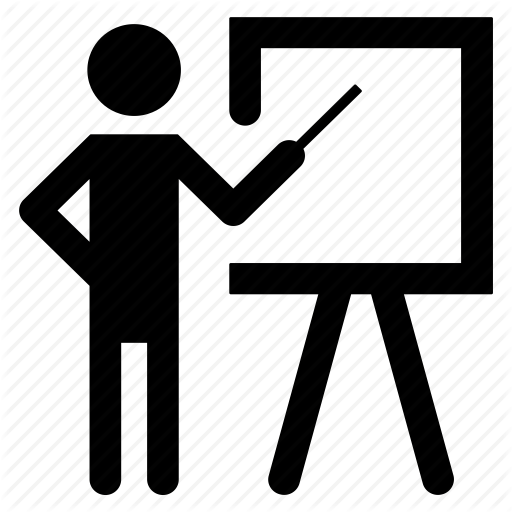Positive influence of Uzbek national games on children’s cognitive development and their disappearance in children’s activity
Abstract
Many factors have a positive and negative impact on the child’s development. The National games of Uzbek peoples have a significant impact on the growth of child are undermining today. Instead of playing physical activities, children are currently opting to play games related to computers, cell phones and other techniques. In fact, the computers or other technological games may boost child’s mental abilities. However, it has many negative effects on the child development. In addition, throughout technical games, the child will not be physical active and it will negatively influence on physical development. In recent years, children have been forgetting to play national games. To identify level of playing the national games among children in the rural area survey was carried on. Result revealed that playing the national games are disappearing from children’s game activity.
References
B. Lefa. The Piaget theory of cognitive development: an educational implications.– USA, Lowa: Wadsworth, 2009, 456p.
Cox E.P., O’Dwyer N., Cook R., Vetter M., Cheng H.L., Rooney K., O’Connor H. Relationship between physical activity and cognitive function in apparently healthy young to middle-aged adults: A systematic review. J. Sci. Med. Sport. 2016;19:616–628. doi: 10.1016/j.jsams.2015.09.003. [PubMed] [CrossRef] [Google Scholar]
De Greeff J.W., Bosker R.J., Oosterlaan J., Visscher C., Hartman E. Effects of physical activity on executive functions, attention and academic performance in preadolescent children: A meta-analysis. J. Sci. Med. Sport. 2018;21:501–507. doi: 10.1016/j.jsams.2017.09.595. [PubMed] [CrossRef] [Google Scholar]
G. King, M. Law, S. King, P. Rosenbaum, M. K. Kertoy, and N. L. Young, “A conceptual model of the factors affecting the recreation and leisure participation of children with disabilities,” Physical & Occupational Therapy in Geriatrics, vol. 23, no. 1, pp. 63–90, 2003. View at Publisher · View at Google Scholar · View at Scopus
Graf C., Koch B., Klippel S., Buttner S., Coburger S., Christ H., Lehmacher W., Bjarnason-Wehrens B., Platen P., Hollmann W., et al. Zusammenhange zwischen korperlicher Aktivitat und und Konzentration im Kindesalter—Eingangsergebnisse des CHILT—Projektes. [Relationship between physical activity and concentration in childhood—Initial results of the CHILT project] Dtsch. Z. Sportmed.2003;54:242–246. [Google Scholar]
Graf C. Aktiv in jedem Alter—Sport und Ernährung in den verschiedenen Lebensphasen: Kinder [Active at any age—Sports and nutrition in various stages of life: Children] Aktuel Ernahrungsmed.2016;41:32–34. [Google Scholar
Gzesh, S. M., & Surber, C. F.(1985).Visual perspective-taking skills in children. Child Development, 56, 1204–1213.Huizinga, M., Dolan, C. V., & van der Molen, M. W.(2006). Age-related change in executive function:Developmental trends and a latent variable analysis. Neuropsychologia, 44, 2017–2036.
Hillman C.H., Pontifex M.B., Castelli D.M., Khan N.A., Raine L.B., Scudder M.R., Drollette E.S., Moore R.D., Wu C.T., Kamijo K. Effects of the FITKids randomized controlled trial on executive control and brain function. Pediatrics. 2014;134:e1063–e1071. doi: 10.1542/peds.2013-3219.[PMC free article] [PubMed] [CrossRef][Google Scholar]
Janczyk, M. (2013). Level 2 perspective taking entails two processes: Evidence from PRP experiments. Journal of Experimental Psychology: Learning, Memory, and Cognition, 39, 1878–1887
Kohl H.W., Craig C.L., Lambert E.V., Inoue S., Alkandari J.R., Leetongin G., Kahlmeier S. The pandemic of physical inactivity: Global action for public health.Lancet. 2012;380:294–305. doi: 10.1016/S0140-6736(12)60898-8. [PubMed] [CrossRef] [Google Scholar]
Lipowski M., Buliński L., Krawczyński M. Physical activities among other types of health-related behaviour in people losing weight. Med. Sci. Monit. 2009;15:CR423–CR428. [PubMed] [Google Scholar]
Lipowski M., Zaleski Z. Inventory of Physical Activity Objectives—A new method of measuring motives for physical activity and sport. Health Psychol. Rep. 2015;3:47–58. doi: 10.5114/hpr.2015.49462. [CrossRef][Google Scholar]
M. W. Matlin. (2005). Cognition. Crawfordsville: John Wiley and Sons, Inc
Okely T., Howard S., Cliff D., Reilly J., Jones R., Janssen X. Relationships between standing and stepping time and executive functions in children aged 3–5 years. J. Sci. Med. Sport. 2014;18:e39. doi: 10.1016/j.jsams.2014.11.231. [CrossRef][Google Scholar]
R. Shaffer and K. Kipp. Development psychology Childhood and Adolescence, eight edition. – USA, Belmont: Wadsworth, 2010,
W. Huitt and J. Hummel. Cognitive Development, Retrieved, – USA, Belmont: The World Wide, 2002, 234p.
https://study.com >academy

In submitting the manuscript to the International Journal on Integrated Education (IJIE), the authors certify that:
- They are authorized by their co-authors to enter into these arrangements.
- The work described has not been formally published before, except in the form of an abstract or as part of a published lecture, review, thesis, or overlay journal.
- That it is not under consideration for publication elsewhere,
- The publication has been approved by the author(s) and by responsible authorities – tacitly or explicitly – of the institutes where the work has been carried out.
- They secure the right to reproduce any material that has already been published or copyrighted elsewhere.
- They agree to the following license and copyright agreement.
License and Copyright Agreement
Authors who publish with International Journal on Integrated Education (IJIE) agree to the following terms:
Authors retain copyright and grant the International Journal on Integrated Education (IJIE) right of first publication with the work simultaneously licensed under Creative Commons Attribution License (CC BY 4.0) that allows others to share the work with an acknowledgment of the work's authorship and initial publication in this journal.





1.png)
